|
Books Should Be Free Loyal Books Free Public Domain Audiobooks & eBook Downloads |
|
|
Books Should Be Free Loyal Books Free Public Domain Audiobooks & eBook Downloads |
|
Religion |
|---|
|
Book type:
Sort by:
View by:
|
By: Rebecca Sophia Clarke (1833-1906) | |
|---|---|
 Little Prudy
Little Prudy
I am going to tell you something about a little girl who was always saying and doing funny things, and very often getting into trouble. Her name was Prudy Parlin, and she and her sister Susy, three years older, lived in Portland, in the State of Maine, though every summer they went to Willowbrook, to visit their grandmother. (From chapter 1 ) | |
By: Sophie May (1833-1906) | |
|---|---|
 Prudy Keeping House
Prudy Keeping House
| |
 Aunt Madge's Story
Aunt Madge's Story
| |
 The Twin Cousins
The Twin Cousins
| |
 Little Grandmother
Little Grandmother
| |
 Little Grandfather
Little Grandfather
| |
By: of Siena Catherine (1347-1380) | |
|---|---|
 Letters of Catherine Benincasa
Letters of Catherine Benincasa
| |
By: Emily Sarah Holt (1836-1893) | |
|---|---|
 The King's Daughters
The King's Daughters
| |
 Mistress Margery
Mistress Margery
| |
 Out in the Forty-Five Duncan Keith's Vow
Out in the Forty-Five Duncan Keith's Vow
| |
 Our Little Lady Six Hundred Years Ago
Our Little Lady Six Hundred Years Ago
| |
By: William Ralph Inge (1860-1954) | |
|---|---|
 Light, Life, and Love : selections from the German mystics of the middle ages
Light, Life, and Love : selections from the German mystics of the middle ages
| |
By: Julia M. Grundy (b. 1874) | |
|---|---|
 Ten Days in the Light of Acca
Ten Days in the Light of Acca
This work is the story of a pilgrimage made over a hundred years ago by a group of American pilgrims. They were not headed for Canterbury, Rome or Jerusalem. Rather, they were headed for an historical but remote prison-city in a far corner of the Ottoman Empire. ‘Akká (Akko), now a city in Israel which attracts thousands of Bahá’í pilgrims each year, was but little thought of in that early period. It was originally the final place of exile and imprisonment for Bahá’u’lláh, a Persian nobleman who proclaimed that He was the Promised One of all religions and Messenger of God for this day and age... | |
By: W. M. Flinders Petrie (1853-1942) | |
|---|---|
 Religion of Ancient Egypt
Religion of Ancient Egypt
William Matthew Flinders Petrie – the father of Egyptian Archaeology – developed and applied statistical analysis to pottery from prehistoric sites and by this established seriation as a relative dating method as a major contribution to Egyptian Archaeology. In this scientific paper he describes special varieties of the conception of the supernatural in ancient Egypt. The source text also includes a list of "principal works on Egyptian religion" and a list of works "on religions ancient and modern". | |
By: Hesba Stretton (1832-1911) | |
|---|---|
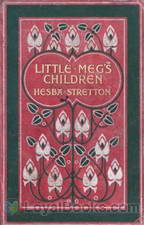 Little Meg's Children
Little Meg's Children
This is the touching and endearing story of Little Meg and her trials and difficulties as she does her best to look after 'her children' after their mother dies. Father is away at sea and is expected every day, but when father's ship comes in he is not aboard! With the help of her new friend and neighbour Kitty, she finds out that he was 'took bad' on the other side of the world, who knows when or if he will ever make it back. Meanwhile, Little Meg must take care of Robby and baby. There are better days and worse days... | |
 Cobwebs and Cables
Cobwebs and Cables
| |
By: George Sale (1697-1736) | |
|---|---|
 The Koran (Al-Qur'an)
The Koran (Al-Qur'an)
| |
By: Frederic W. Farrar (1831-1903) | |
|---|---|
 Seekers after God
Seekers after God
| |
By: Swami Paramananda (1884-1940) | |
|---|---|
 The Upanishads
The Upanishads
| |
By: John Knox (1514?-1572) | |
|---|---|
 The Works of John Knox, Vol. 1 (of 6)
The Works of John Knox, Vol. 1 (of 6)
| |
 The Pulpit Of The Reformation, Nos. 1, 2, 3 and 4.
The Pulpit Of The Reformation, Nos. 1, 2, 3 and 4.
| |
By: St. Ignatius Loyola (1491-1553) | |
|---|---|
 The Autobiography of St. Ignatius
The Autobiography of St. Ignatius
This account of the life of St. Ignatius, dictated by himself to Father Gonzalez, is a most valuable record of the great Founder of the Society of Jesus. It, more than any other work, gives an insight into the spiritual life of St. Ignatius. Few works in ascetical literature, except the writings of St. Teresa and St. Augustine, impart such a knowledge of the soul.The saint in his narrative always refers to himself in the third person, and this mode of speech has here been retained. Many persons who have neither the time, nor, perhaps, the inclination, to read larger works, will read, we trust, with pleasure and profit this autobiography... | |
By: Amy Carmichael (1867-1951) | |
|---|---|
 Things as They Are Mission Work in Southern India
Things as They Are Mission Work in Southern India
| |
By: Philipp Melanchthon (1497-1560) | |
|---|---|
 Apology of the Augsburg Confession
Apology of the Augsburg Confession
| |
 The Augsburg Confession
The Augsburg Confession
| |
By: G. Campbell Morgan (1863-1945) | |
|---|---|
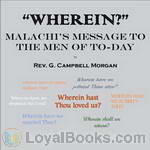 Wherein?
Wherein?
These studies in the book of Malachi were delivered as addresses to the students at Mr. Moody’s Bible School in Chicago, and then to my own congregation. They have also appeared in “The Record of Christian Work” in the United States, and in “Out and Out” in England. They are now sent out in a more permanent form, after careful revision, with the prayer that they may be used of God in calling His own children into the place of power without which form is nothing. (Introduction by G. Campbell Morgan) | |
By: James Hudson Taylor (1832-1905) | |
|---|---|
 A Ribband of Blue And Other Bible Studies
A Ribband of Blue And Other Bible Studies
| |
 Separation and Service or Thoughts on Numbers VI, VII.
Separation and Service or Thoughts on Numbers VI, VII.
| |
By: David Marshall Brooks (1902-1994) | |
|---|---|
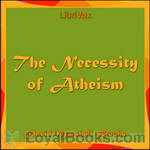 The Necessity of Atheism
The Necessity of Atheism
Plain speaking is necessary in any discussion of religion, for if the freethinker attacks the religious dogmas with hesitation, the orthodox believer assumes that it is with regret that the freethinker would remove the crutch that supports the orthodox. And all religious beliefs are "crutches" hindering the free locomotive efforts of an advancing humanity. There are no problems related to human progress and happiness in this age which any theology can solve, and which the teachings of freethought cannot do better and without the aid of encumbrances. | |
By: Aunt Fanny (1822-1894) | |
|---|---|
 The Little Nightcap Letters
The Little Nightcap Letters
| |
 The Fairy Nightcaps
The Fairy Nightcaps
| |
 The Big Nightcap Letters Being the Fifth Book of the Series
The Big Nightcap Letters Being the Fifth Book of the Series
| |
By: Rev. Gerald T. Brennan (1898-1962) | |
|---|---|
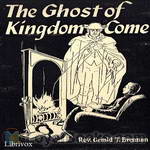 The Ghost of Kingdom Come
The Ghost of Kingdom Come
A word about ghosts. Do you believe in Ghosts? Are you afraid of Ghosts? Ghosts are truly real. St. Joseph, St. Peter, St. Bridget are real ghosts. This little book is written with the hope that the boys and girls who read it, will someday become “Ghosts of Kingdom Come”! ~ Father GeraldConsidered one of the “Angel Food” series of books, this volume is a series of delightful stories for children – each with a moral – woven inside the story of a ghostly visitor, to a priest visiting an old castle. (Summary from the introduction and by Maria Therese) | |
By: Ernest Renan (1823-1892) | |
|---|---|
 The Life of Jesus
The Life of Jesus
| |
By: Andrew Dickson White (1832-1918) | |
|---|---|
 History of the Warfare of Science with Theology in Christendom
History of the Warfare of Science with Theology in Christendom
| |
By: Thomas De Witt Talmage (1832-1902) | |
|---|---|
 Abominations of Modern Society
Abominations of Modern Society
| |
By: Grafton Elliot Smith (1871-1937) | |
|---|---|
 The Evolution of the Dragon
The Evolution of the Dragon
| |
By: Richard W. Church (1815-1890) | |
|---|---|
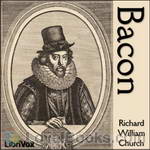 Bacon
Bacon
This investigation of Bacon the scholar and man of letters begins with a look at the early days ang progresses to his relationships with Queen Elizabeth and James I. It includes accounts of his positions as solicitor general, attorney-general, and chancellor. The book concludes with Bacon's failure, his overall philosophy, and summaries of his writings. | |
By: Ferrar Fenton Bible (1832-1920) | |
|---|---|
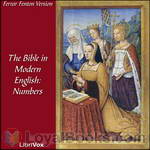 Numbers (FFB)
Numbers (FFB)
The record of the numbering of the nation of Israel, as well as the beginning of their "maturity" as they near the "promised land" of Canaan. (Introduction by Mark Penfold) | |
By: Lionel D. (Lionel David) Barnett (1871-1960) | |
|---|---|
 Hindu Gods And Heroes Studies in the History of the Religion of India
Hindu Gods And Heroes Studies in the History of the Religion of India
| |
By: George W. Foote (1850-1915) | |
|---|---|
 Comic Bible Sketches Reprinted from "The Freethinker"
Comic Bible Sketches Reprinted from "The Freethinker"
| |
 Bible Romances First Series
Bible Romances First Series
| |
 Prisoner for Blasphemy
Prisoner for Blasphemy
| |
 Arrows of Freethought
Arrows of Freethought
| |
By: Mírzá Abu’l-Fadl Gulpáygání (1844-1914) | |
|---|---|
 The Brilliant Proof (Burhäne Lämé) in reply to an attack upon the Bahai Revelation by Peter Z. Easton
The Brilliant Proof (Burhäne Lämé) in reply to an attack upon the Bahai Revelation by Peter Z. Easton
“In these days,” writes the renowned Bahá’í scholar, Mírzá Abu’l-Fadl, “which are the latter days of 1911, A. D. and the early days of 1330 A. H., I have seen a curious article which astonished me. What did I see? I find that one of the missionaries of the Protestant sect, who accounts himself among the learned men of the twentieth century, a helper of the pure religion of Christ and one of the civilized and cultured occidentals, by name, Peter Z. Easton, has been so provoked by jealousy... | |
By: Wilfred Thomason Grenfell (1865-1940) | |
|---|---|
 What the Church Means to Me A Frank Confession and a Friendly Estimate by an Insider
What the Church Means to Me A Frank Confession and a Friendly Estimate by an Insider
| |
By: Mrs. O. F. Walton (1849-1939) | |
|---|---|
 A Peep Behind the Scenes
A Peep Behind the Scenes
Rosalie is the daughter of a traveling theater master and is envied by many young girls as she appears to live a life full of glamour, glitz, and glory. But beneath the happy smiling face is a hurting heart, a deep sorrow for her dying mother, and a wretched life. Follow Rosalie as she learns of the Good Shepherd who loves and cares for her, and begins to trust Him for daily strength. | |
 Christie's Old Organ
Christie's Old Organ
Christie is all alone in the world after his mother dies. He lives in a boarding house and every night creeps up the attic stairs to hear an old barrel organ play. One night while he is listening, the organ stops and Christie hears a thump. What has happened? What should Christie do? | |
 Poppy's Presents
Poppy's Presents
One day, Poppy gets told her mother has a present for her. But the neighbors laugh and say there is such a thing as too much of a good thing. What is the present? | |
By: George John Romanes (1848-1894) | |
|---|---|
 A Candid Examination of Theism
A Candid Examination of Theism
| |
 Thoughts on Religion
Thoughts on Religion
| |
By: W. T. (William Thomas) Stead (1849-1912) | |
|---|---|
 King of the Jews A story of Christ's last days on Earth
King of the Jews A story of Christ's last days on Earth
| |
By: Jacob Bryant (1715-1804) | |
|---|---|
 A New System; or, an Analysis of Antient Mythology. Volume I.
A New System; or, an Analysis of Antient Mythology. Volume I.
| |
By: Harold B. (Harold Bruce) Hunting (1879-1958) | |
|---|---|
 Hebrew Life and Times
Hebrew Life and Times
| |
By: Rev. James MacCaffrey (1875-1935) | |
|---|---|
 History of the Catholic Church from the Renaissance to the French Revolution: Volume 1
History of the Catholic Church from the Renaissance to the French Revolution: Volume 1
This first volume of a two volume set traces the trials and triumphs of the Catholic Church during the period before the reformation up to the 19th century. The origins, causes and developments of the various protestant sects that were the fruit of the reformation are studied in depth, as well as the men, schools of thought and movements within and without the Church that influenced this important time period in Church history. | |
By: Swami Abhedananda (1866-1939) | |
|---|---|
 Five Lectures on Reincarnation
Five Lectures on Reincarnation
| |
By: Nikolaj Velimirović (1880-1956) | |
|---|---|
 The Agony of the Church (1917)
The Agony of the Church (1917)
| |
By: Theophilus Goldridge Pinches (1856-1934) | |
|---|---|
 The Religion of Babylonia and Assyria
The Religion of Babylonia and Assyria
| |
By: Cyril Bailey (1871-1957) | |
|---|---|
 The Religion of Ancient Rome
The Religion of Ancient Rome
| |
By: Christoph von Schmid (1768-1854) | |
|---|---|
 Basket of Flowers, The
Basket of Flowers, The
James is the king's gardener and he deeply enjoys caring for and cultivating flowers. He teaches his daughter Mary many principles of godliness through the flowers. One day Mary is falsely accused of stealing, and the penalty is death. Through many trials and hardships, Mary learns of the goodness of God, the blessing of praying for her enemies, how to consider her trials as a joy, and true forgiveness. | |
By: Paul Sabatier (1858-1928) | |
|---|---|
 Life of St. Francis of Assisi
Life of St. Francis of Assisi
| |
By: Anna Jameson (1794-1860) | |
|---|---|
 Legends of the Madonna as Represented in the Fine Arts
Legends of the Madonna as Represented in the Fine Arts
| |
By: Madeline Leslie (1815-1893) | |
|---|---|
 The Lost Kitty
The Lost Kitty
| |
By: Constantin-F. Volney (1757-1820) | |
|---|---|
 The Ruins, or, Meditation on the Revolutions of Empires and the Law of Nature
The Ruins, or, Meditation on the Revolutions of Empires and the Law of Nature
| |
By: Justus Hecker (1795-1850) | |
|---|---|
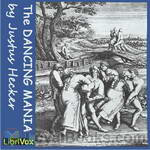 The Dancing Mania
The Dancing Mania
Numerous theories have been proposed for the causes of dancing mania, and it remains unclear whether it was a real illness or a social phenomenon. One of the most prominent theories is that victims suffered from ergot poisoning, which was known as St Anthony’s Fire in the Middle Ages. During floods and damp periods, ergots were able to grow and affect rye and other crops. Ergotism can cause hallucinations, but cannot account for the other strange behaviour most commonly identified with dancing mania... | |
By: Thomas Browne | |
|---|---|
 Religio Medici and Hydriotaphia
Religio Medici and Hydriotaphia
Religio Medici (The Religion of a Doctor) sets out Sir Thomas Browne's spiritual testament as well as being an early psychological self-portrait. In its day, the book was a European best-seller. It was published in 1643 by the newly-qualified physician, and its unorthodox views placed it swiftly upon the Papal Index Librorum Prohibitorum in 1645. Although predominantly concerned with Christian faith, the Religio also meanders into digressions upon alchemy, hermetic philosophy, astrology, and physiognomy... | |
By: Margaret Elizabeth Munson Sangster (1838-1912) | |
|---|---|
 Five Happy Weeks
Five Happy Weeks
| |
By: John William Draper (1811-1882) | |
|---|---|
 History of the Conflict Between Religion and Science
History of the Conflict Between Religion and Science
| |
By: A. B. (Albert B.) Simpson (1843-1919) | |
|---|---|
 Days of Heaven Upon Earth
Days of Heaven Upon Earth
| |
By: Isabella Lilias Trotter (1853-1928) | |
|---|---|
 Parables of the Cross
Parables of the Cross
Death is the Gate of Life. There was deep insight in those old words. For man's natural thought of death is that of a dreary ending in decay and dissolution. And from his standpoint he is right: death as the punishment of sin is an ending.But far other is God's thought in the redemption of the world. He takes the very thing that came in with the curse, and makes it the path of glory. Death becomes a beginning instead of an ending, for it becomes the means of liberating a fresh life.And so the hope that lies in these parable lessons of death and life is meant for those only who are turning to Him for redemption... | |
 Parables of the Christ-life
Parables of the Christ-life
| |
By: Charles Bradlaugh (1833-1891) | |
|---|---|
 Humanity's Gain from Unbelief Reprinted from the "North American Review" of March, 1889
Humanity's Gain from Unbelief Reprinted from the "North American Review" of March, 1889
| |
By: Reuel Howe (1905-1985) | |
|---|---|
 Herein is Love
Herein is Love
Prescient look at the church, its message and role in society, both perceived and true, focused through the lens of the biblical doctrine of love, and demonstrated in relationships between parent and child, parishioners and public, and pastor and people. | |
By: Adolf von Harnack (1851-1930) | |
|---|---|
 History of Dogma, Volume 1
History of Dogma, Volume 1
| |
By: Washington Gladden (1836-1918) | |
|---|---|
 Who Wrote the Bible? : a Book for the People
Who Wrote the Bible? : a Book for the People
| |
By: James Stalker (1848-1927) | |
|---|---|
 The Life of St. Paul
The Life of St. Paul
| |
 The Trial and Death of Jesus Christ A Devotional History of our Lord's Passion
The Trial and Death of Jesus Christ A Devotional History of our Lord's Passion
| |
 The Preacher and His Models The Yale Lectures on Preaching 1891
The Preacher and His Models The Yale Lectures on Preaching 1891
| |
By: George Smith (1833-1919) | |
|---|---|
 Life of William Carey
Life of William Carey
| |
By: Goldwin Smith (1823-1910) | |
|---|---|
 No Refuge but in Truth
No Refuge but in Truth
| |
 The Religious Situation
The Religious Situation
| |
By: Alexander Whyte (1836-1921) | |
|---|---|
 Samuel Rutherford and some of his correspondents
Samuel Rutherford and some of his correspondents
| |
 Bunyan Characters Volume II
Bunyan Characters Volume II
This is the second volume of four which goes into the details of Characters from John Bunyan's books. This one continues with the characters of Pilgrims Progress. | |